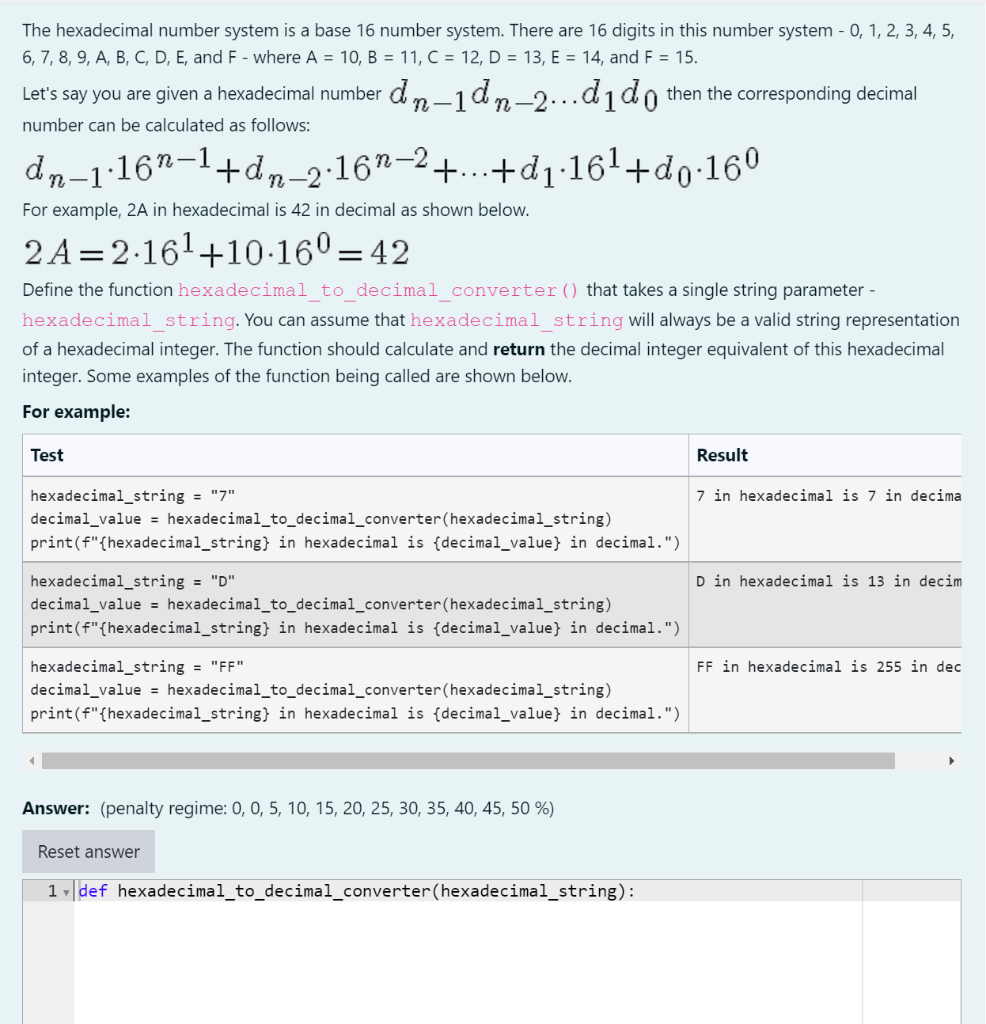Home /
Expert Answers /
Computer Science /
solve-in-python-the-hexadecimal-number-system-is-a-base-16-number-system-there-are-16-digits-in-t-pa122
(Solved): Solve in python The hexadecimal number system is a base 16 number system. There are 16 digits in t ...
Solve in python
The hexadecimal number system is a base 16 number system. There are 16 digits in this number system - 0, 1, 2,3,4, 5, \( 6,7,8,9, A, B, C, D, E \) and \( F \) - where \( A=10, B=11, C=12, D=13, E=14 \), and \( F=15 . \) Let's say you are given a hexadecimal number \( d n-1 d n-2 \cdots d, d \), then the corresponding decimal number can be calculated as follows: \( d_{n-1} \cdot 16^{n-1}+d_{n-2} \cdot 16^{n-2}+\cdots+d_{1} \cdot 16^{1}+d_{0} \cdot 16^{0} \) For example, 2A in hexadecimal is 42 in decimal as shown below. \( 2 A=2 \cdot 16^{1}+10 \cdot 16^{0}=42 \) Define the function hexadecimal to decimal_converter () that takes a single string parameter - hexadecimal_string. You can assume that hexadecimal_string will always be a valid string representation of a hexadecimal integer. The function should calculate and return the decimal integer equivalent of this hexadecimal integer. Some examples of the function being called are shown below.
